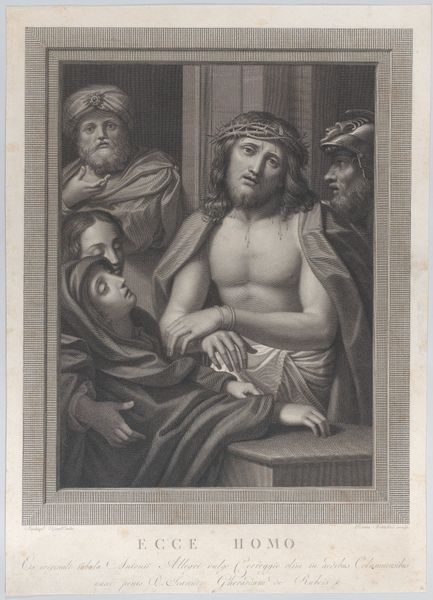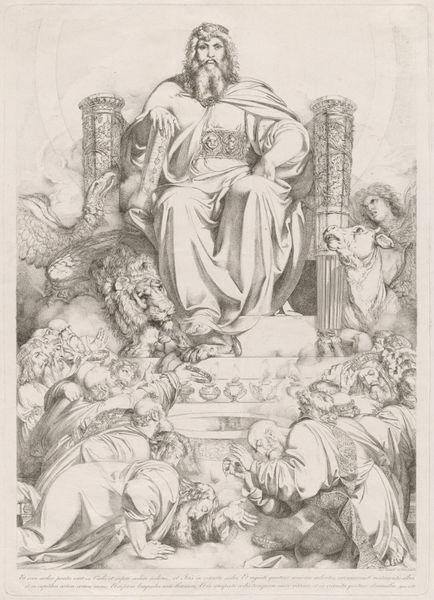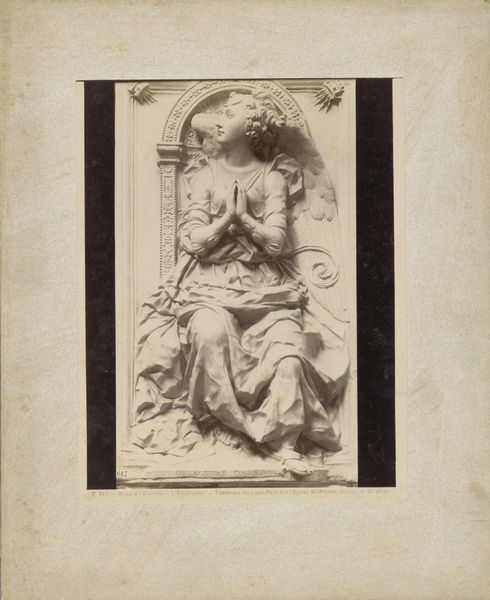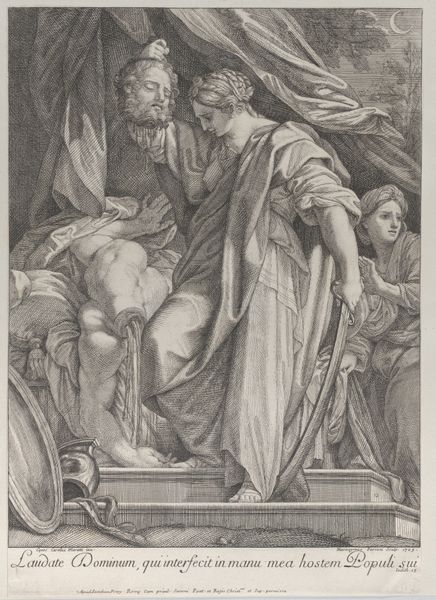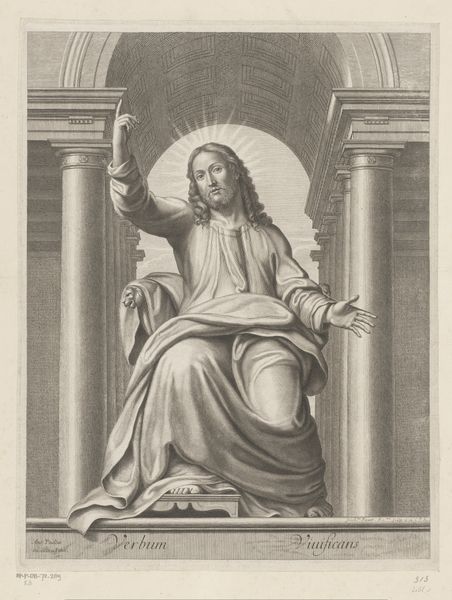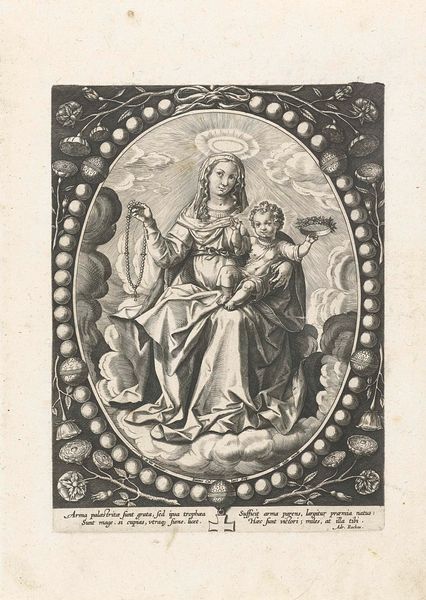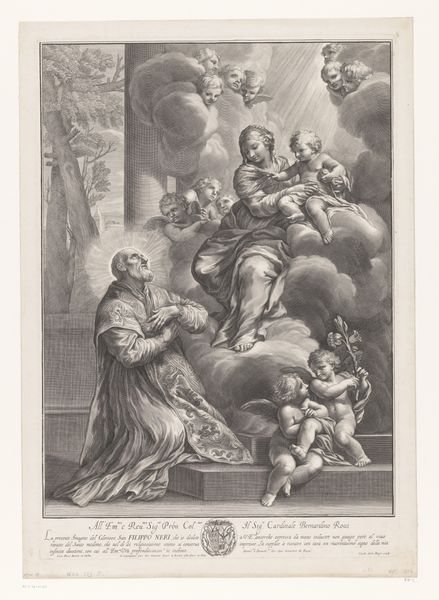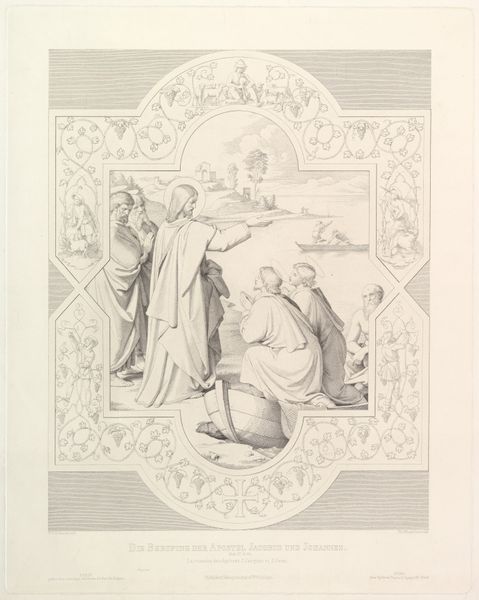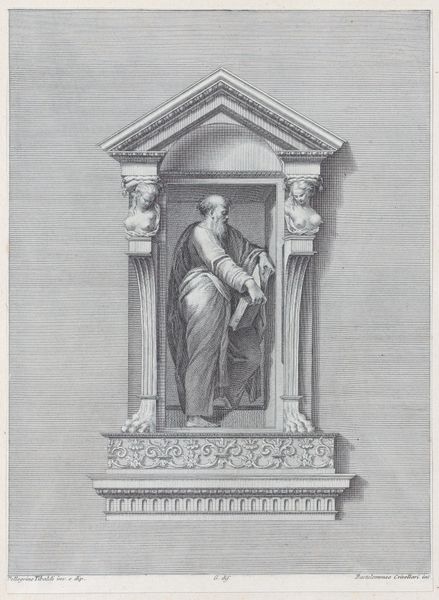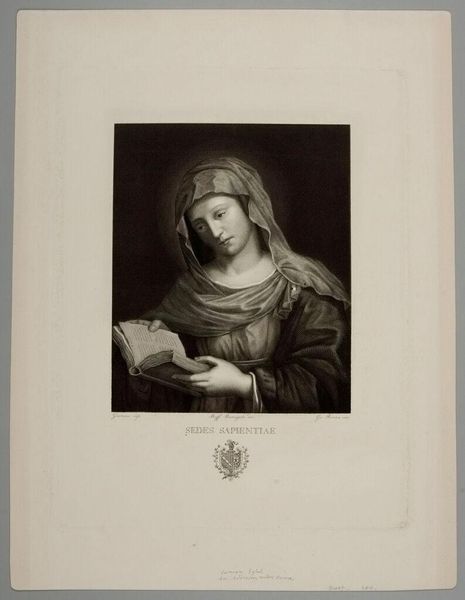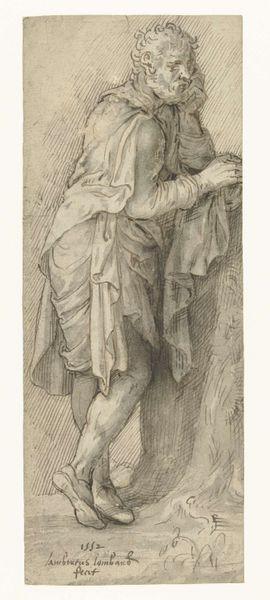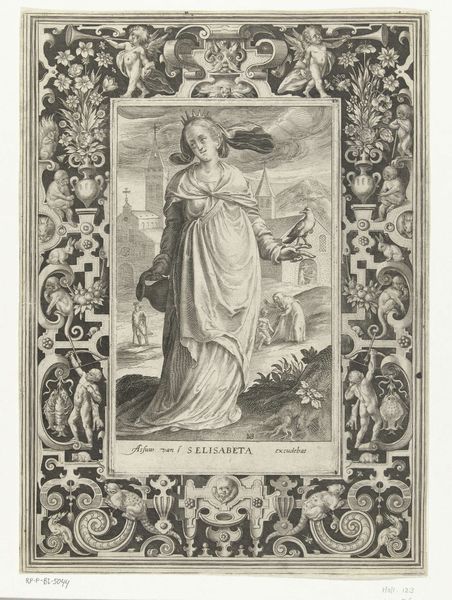
print, engraving
#
portrait
#
medieval
# print
#
classical-realism
#
figuration
#
line
#
history-painting
#
engraving
Dimensions: height 519 mm, width 357 mm
Copyright: Rijks Museum: Open Domain
Editor: This engraving, "Profeet Jesaja" by Benoit Taurel, probably made sometime in the mid-19th century, features the prophet Isaiah surrounded by cherubs. It has this strange kind of medieval meets classical aesthetic, I find that so peculiar. How do you interpret this combination? Curator: That tension is very revealing! Considering this print is held in the Rijksmuseum, we should think about its public function. In the 19th century, prints like these played a vital role in disseminating imagery and historical narratives. Taurel is clearly drawing upon classical artistic conventions to elevate Isaiah. The very choice to depict a biblical figure through a classical, idealized lens speaks volumes. What sociopolitical messages do you think this kind of appropriation of the classical aesthetic sends? Editor: Maybe it’s an attempt to legitimize Isaiah or perhaps Christianity by associating it with the grandeur of classical antiquity. The Rijksmuseum's mission was nation-building through art; could this print be promoting a sense of shared cultural heritage? Curator: Precisely! The cherubs, reminiscent of Renaissance art, add another layer. But who has access to these symbols? Who is the imagined audience? Editor: I hadn't thought of it that way. Maybe the educated elite, those familiar with classical and Renaissance art? Curator: And how does that shape their understanding of faith and national identity? Does it democratize knowledge or create hierarchies? The classical style might lend authority, but it also subtly reinforces existing power structures by celebrating European artistic heritage within a religious context. What’s your take now? Editor: Wow, I now see that it is about way more than just an aesthetic choice. It seems this image reflects broader power dynamics, cultural values, and even perhaps aspirations of the time period. Curator: Exactly. It's not just art; it's a political statement rendered through historical and artistic conventions. Thanks for the perspective!
Comments
No comments
Be the first to comment and join the conversation on the ultimate creative platform.

